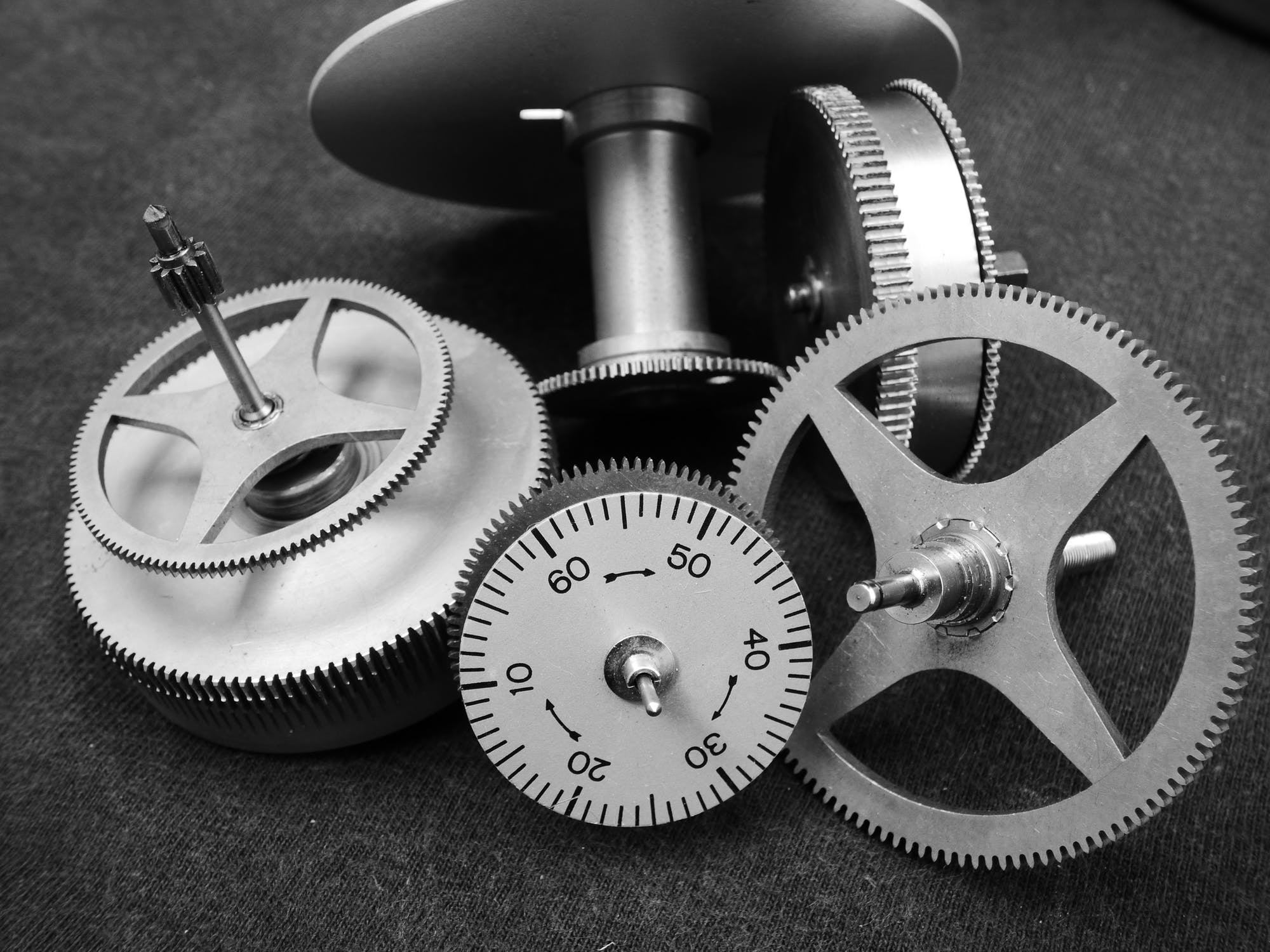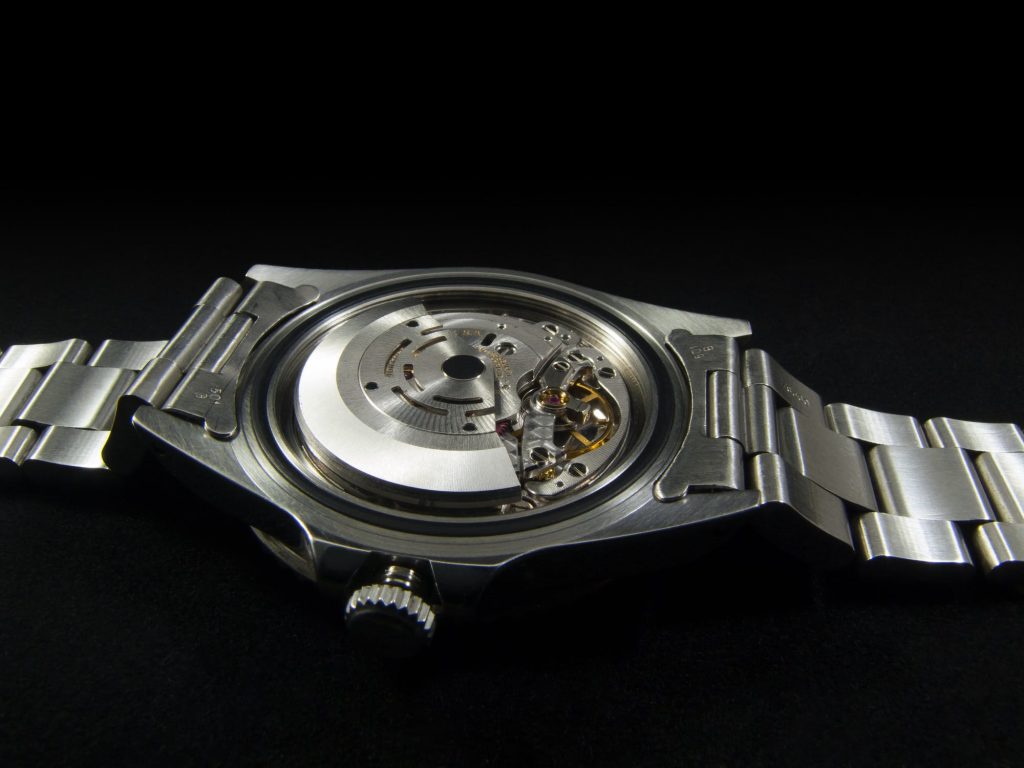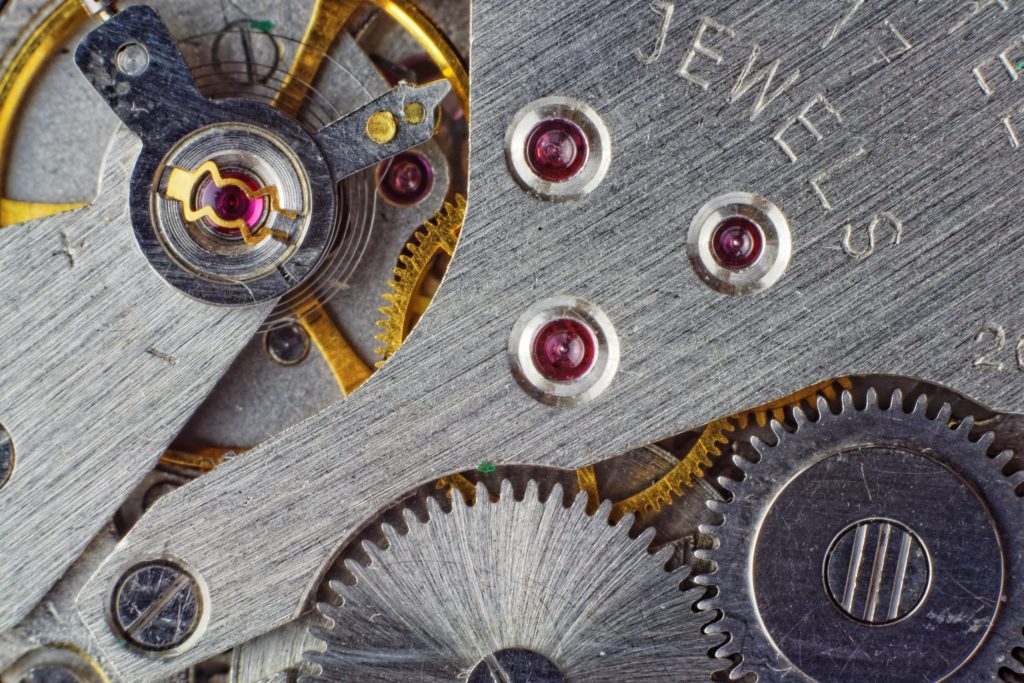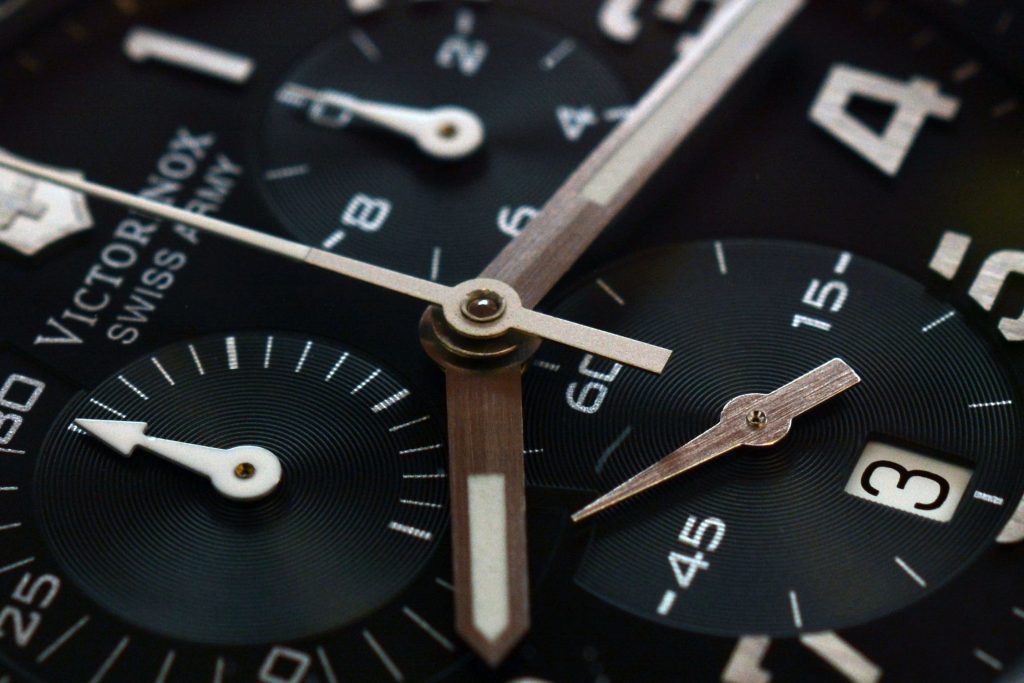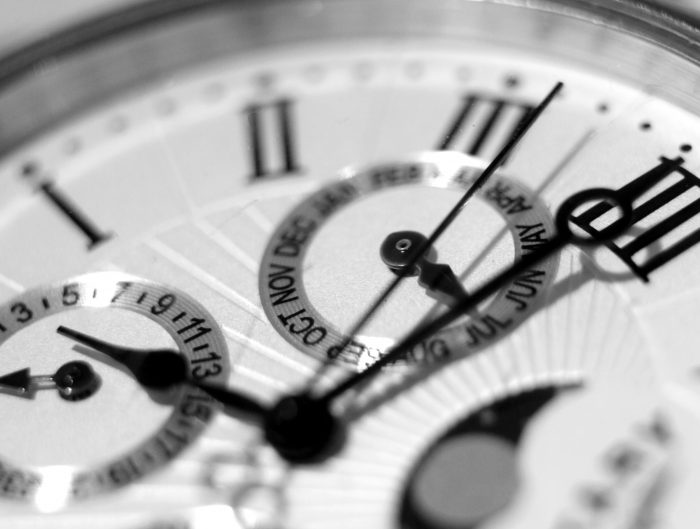As humans, we’re obsessed with the concept of time; no other mammal on Earth is as concerned with the time of day as we are. Ever since the invention of the sundial some 5,000 years ago we’ve been fascinated by horology, or the science of timekeeping. We created the concept of time so we could break up our days and better organize our busy schedules. Now, we depend on the time to keep track of our lives. And with the advancement of technology, clocks are everywhere- our cell phones, our computers, our cars, and plastered on at least one wall of every room we enter.
Why, then, have wristwatches not become obsolete? You would think that with clocks being so easily accessible, we would no longer feel the need to wear one on our wrists. But this is definitely not the case. The answer is simple- to watch enthusiasts a wristwatch is more than just a keeper of time. A luxury watch is seen as a masterful work of art, the epitome of craftsmanship and engineering, and of course, a way to express your personal style. Even with the invention of newer smart watches, the classic fine watch will probably never lose its appeal.
But you can’t wear a fine watch without understanding how it functions! Sure, you can wear a watch because you like the look of it. It’s easy to look down at your wrist to find the time, and it’s great to always have it on you. But the most fascinating thing about a watch is how it works. Don’t you ever wonder how your watch continues to keep the correct time? Or how it so accurately knows today’s date? And these two functions merely scratch the surface of all that some watches can do! You have to be able to talk the talk if you want to walk the walk. And that’s exactly why we’re here to help.
With our basic watch guide, we’re breaking down every aspect of a fine watch to help you better understand what makes your watch tick. So sit back, relax, and get ready to learn.
Basic Watch Components:
Before we delve into the inside workings of a watch, it’s important to understand the outside components. The following elements make up almost every fine watch:- Bezel-the bezel is the outer ring of a watch that holds the dial-side crystal in place. They can be screwed or snapped onto the case. Some bezels, typically those on sport watches, rotate in order to record elapsed time.
- Bracelet/Strap- the watch bracelet is typically a flexible metal band of connected links that wraps around the wearer’s wrist to keep the watch in place. The bracelet is referred to as the “strap” when it’s made out of non-metal materials such as leather or nylon.
- Case- the watch case is the housing for the dial and movement; it protects the small inner workings of a watch from the environment. Cases can be made from different metals and come in a variety of different shapes.
- Complications- watch complications are different functions of a watch other than the basic time display. See watch complications below for more information.
- Crown- the watch crown is used to set the time and date on a watch. It is a small knob, typically located at the 3 o’clock position on a watch.
- Crystal- the watch crystal is the translucent disc that rests above the dial. It protects the dial and hands from water and dirt. Three common materials used to make watch crystals are synthetic sapphire, mineral glass, and acrylic. Synthetic sapphire is used in fine watchmaking since it is more scratch resistant.
- Dial- the dial, sometimes referred to as the “face” of the watch, is where the hands and markers are located, a visual interface to a watch that actually displays the time.
- Hands- watch hands designate the specific time. They are made of thin strips of metal and are attached to a center point of rotation. Styles range depending on certain types of watches and their specified uses.
- Lugs- lugs are attached to the watch case at the 12 and 6 o’clock positions. They are pieces of metal extending from the case that help hold the watch bracelet/strap in place.
- Lume- lume, also referred to as luminosity, is applied to the dial and hands of most watches to improve visibility in low-light conditions.
- Sub-dial- a subsidiary dial, or sub-dial, is a small dial on the main dial that shows additional information. These are more commonly seen on chronographs in order to display hours, minutes, and seconds.
Watch Mechanics
Now that you understand the basic watch components, let’s talk about all the small parts inside a watch that make it tick. Every part has its own specific function, and they all work together in order to tell accurate time.- Amplitude- amplitude is how big of a rotation the balance wheel moves per oscillation.
- Bridges-bridges are for structure, hence the name. They are attached to the mainplate via screws, and hold wheels and other parts in place.
- Barrel and Mainspring- The mainspring is what provides power to the watch. When wound, it generates the power needed to provide accurate time. The barrel is a large gear where the powerful mainspring is housed.
- Beat Error-Beat error is the measurement of time between “tick” and “tock.” Then, the two are compared for accuracy. In an ideal world, the durations are equal, meaning the beat error is zero.
- Balance Wheel- similar to a pendulum, the balance wheel is the timekeeping device in mechanical watches. It is a weighted wheel that rotates back and forth. The balance spring, or hairspring, restores force to the balance wheel. Working together, the balance wheel and hairspring regulate the entire timepiece.
- Center Wheel- appropriately named, the center wheel is located in the center of the movement. Driven by the barrel, the center wheel rotates once per hour. The minute hand is attached to the center wheel via the cannon pinion.
- Crown Wheel- located between the winding stem and ratchet wheel, the crown wheel serves as an intermediate wheel in transferring torque from the winding of the crown to the ratchet wheel.
- Cannon Pinion-the heart of the motion works; the cannon pinion translates the movement of the wheels inside the watch into the time keeping display on the dial. Typically, the cannon pinion is attached to the center wheel and is the post the minute hand is set on.
- Click- the click is what holds the ratchet wheel against the force of the mainspring, which allows the watch to be wound. Ever heard a watch click as its being wound? That’s the sound of the click impacting each tooth of the ratchet wheel.
- Detent Escapement-using a very thin blade spring with a jewel mounted on it, the detent escapement holds the escape wheel in place. Then, a jewel on the balance trips the spring as it passes, which releases the escape wheel so it can advance.
- Escape Wheel- the escape wheel is part of the escapement. It interacts with the pallet fork to translate rotational motion into lateral impulses.
- Escapement- the escapement manages the release of power from the mainspring in a way that can be regulated by the balance wheel and hairspring. Without the escapement, the watch would unwind in an incontrollable fashion.
- Endshake-the amount of vertical motion a pivot has in a jewel-hole. Endshake is necessary for smooth operation of the gear train. Generally, the amount of endshake decreases towards the escapement while it increases on wheels towards the barrel.
- Fourth Wheel- in watches with sub-dials that display seconds, the second hand is attached to the extended fourth wheel pivot. It rotates once per minute.
- Frequency- the frequency is how many times a balance wheel vibrates per hour. This can be expressed in Hertz (Hz) or in vibrations per hour (vph).
- Gear Train-the gear train is responsible for transmitting torque from the barrel to the escapement. Arranged as a multiplying gear train, it is comprised of wheels and pinions.
- Hairspring- as mentioned earlier, the hairspring works with the balance wheel to regulate the entire timepiece. It is a flat, spiral spring that breathes at each vibration of the balance wheel, enabling oscillations.
- Jewels-jewels are used to reduce friction and wear created by rotating wheels and pivots. Jewels are made of synthetic sapphire because of its hardness. They are cylindrical, pierced with a hole on the flat sides. On one side, there is a concave oil sink, designed to retain oil on the pivots. Without jewels, the entire mainplate or bridge would have to be replaced when pivots caused any mechanical wear.
- Keyless Works- this component allows the movement to be wound and the time set via the winding stem. The keyless works allows for two (or more) winding stem positions to engage different gear trains in the movement.
- Lever Escapement- similar to the detent escapement, but more common. It is the preferred escapement for watches as it is resistant to shock.
- Motion Works- the motion works are responsible for carrying the hour and minute hands. This component also allows the hands to be set via the keyless works.
- Movement- the complete assembled mechanism within a watch or clock that acts as the engine for telling time and any other complications.
- Mainplate- the mainplate is the foundation of a movement. Working with the bridges, the mainplate holds the parts of a watch movement together in a sturdy and precise manner.
- Pallet Fork- the pallet fork is part of the escapement. Each pallet interacts with the escape wheel in order to move back and forth. This interaction provides energy to the balance wheel, causing it to oscillate.
- Ratchet Wheel- the ratchet wheel is attached to the barrel. When winding a watch, the ratchet wheel turns and coils the mainspring. The click holds the ratchet wheel in place, which prevents the mainspring from unwinding.
- Rate- the rate refers to how accurate a watch is running; this is expressed in +/- seconds per day (s/d).
- Rotor- the rotor is a weight that rotates with the wearer’s motion. The rotation of the rotor winds the watch.
- Sideshake- similar to endshake, sideshake is the amount of movement a pivot has in a jewel-hole. Minimal sideshake is necessary for a gear to turn, but too much can cause the watch to stop.
- Third Wheel-located between the center and fourth wheels, the third wheel allows for an increasing gear ratio of 1 to 60 when considering the rotational speed of the wheels.
- Wheels- wheels are large gears that comprise the gear train. Wheels and pinions work in conjunction to create rotation to keep the watch running. Pinions are driven while wheels do the driving. Wheels are larger gears and pinions are smaller gears; the two are riveted together in the gear train.
- Winding Stem- the interface between the exterior and interior of a watch; the winding stem allows for turning, pulling, and pushing of the crown, which allows you to wind the watch, set the time, change the date, etc.
Watch Complications
Many watches have other functions that go beyond telling time. These features are referred to as watch complications.- Annual Calendar- the annual calendar indicates the date. It automatically changes for months with less than 31 days. Some watches show the day of the week and month, while others simply show the numerical date.
- Chronograph- also known as a stopwatch, a chronograph measures periods of time. A basic chronograph has an independent sweep second hand, which can be started, stopped, and set back to zero by using the pushers. More complex chronographs utilize sub-dials.
- Dual Time- a dual-time complication features two hour hands in order to simultaneously indicate time in two different time zones.
- Equation of Time- this complication displays the difference between apparent solar time and mean solar time, which is characterized by the orbit of the Earth around the Sun.
- Foudroyante- also known as the flying seconds hand, this complication is a sub-dial that indicates fractions of a second.
- Fly-Back Chronograph- a specific type of stopwatch that allows the timing to be reset without first having to be stopped.
- Grande Sonnerie- this complication is a combination of the quarter striking and minute repeater complications; a quarter striking complication audibly strikes hours and quarters while a minute repeater strikes out the hours, quarters, and minutes on request.
- Hack Feature- used for precise time setting, the hack feature stops the watch completely when in the setting position.
- Jump Hour- as the name suggests, the jump hour complication allows the hour hand to jump from hour to hour every 60 minutes. Rather than slowly sweeping across the dial, the hour hand will point exactly at the current hour until the 60th minute of the hour is over.
- Minute Repeater- as mentioned previously, minute repeaters audibly sound the time on demand.
- Moon Phase-the moon phase complication displays the current phase of the moon- the sunlit portion of the moon. This is one of the earliest known watch complications.
- Perpetual Calendar- similar to the annual calendar, the perpetual calendar indicates the date. It automatically changes for months with less than 31 days, as well as leap years.
- Power Reserve- similar to a car’s fuel gauge, the power reserve complication shows how much time a mechanical watch can run until it needs to be wound again.
- Pulsimeter- this complication is displayed as a scale on a watch dial. It is used to determine pulse rate, or pulsations, based on time.
- Split-Seconds Chronograph- this type of stopwatch features two second hands that allow for the timing of two intervals of time that start at the same instant. This complication is more commonly found on sport watches.
- Tachymeter- a scale displayed on a watch used to determine speed based on time.
- Telemeter- a scale displayed on a watch used to determine distance based on time.
- World-Timer- as the name suggests, this complication indicates the time in major cities around the world, corresponding to time-zones.
Dial Markers
There are many different ways the dial of your watch can be marked in order to tell the time. Some of the more popular ways include:- Arabic- features only numeral indicator markers.
- Stick- features only marks or dots, no numeral indicators.
- Arabic and Stick- a combination of both Arabic and Stick dials; the 12 o’clock, 3 o’clock, 6 o’clock, and 9 o’clock markers are numerals while the rest are stick.
- Roman- features only Roman numeral indicators.
- Roman and Stick- a combination of both Roman and Stick dials; the 12 o’clock, 3 o’clock, 6 o’clock, and 9 o’clock markers are Roman numerals while the rest are stick.
Shop Fine Watches at Leo Hamel Fine Jewelers
“Small but mighty” is the perfect phrase to describe fine watches. Bet you didn’t even realize there were so many different components to these watches, or that some watches are far more complex than simply telling the time! If you have any questions regarding our watch guide, feel free to leave a comment below, shoot us an e-mail, or give us a call. We’re always happy to help. And if you’re looking to purchase a luxury watch, you have to come see our jewelry store. With antique, vintage, and modern fine watches, both new and pre-owned, Leo Hamel Fine Jewelers offers one of the best watch collections in San Diego. With over 40 years of experience buying, selling, and refurbishing watches, we can expertly guide you to find the right timepiece for your lifestyle at the right price. Reference our watch 101 guide while you’re shopping to help you figure out exactly what you’re looking for. Not only will you look extremely dapper, you’ll be well-versed in all things watches!Share
Sydney Daly-Weber
You might also like
The Epitome of Luxury: All About Patek Philippe Watches
Publish date
April 1, 2021
Jewelry Capsule: Essentials that never go out of style
Publish date
March 26, 2021

